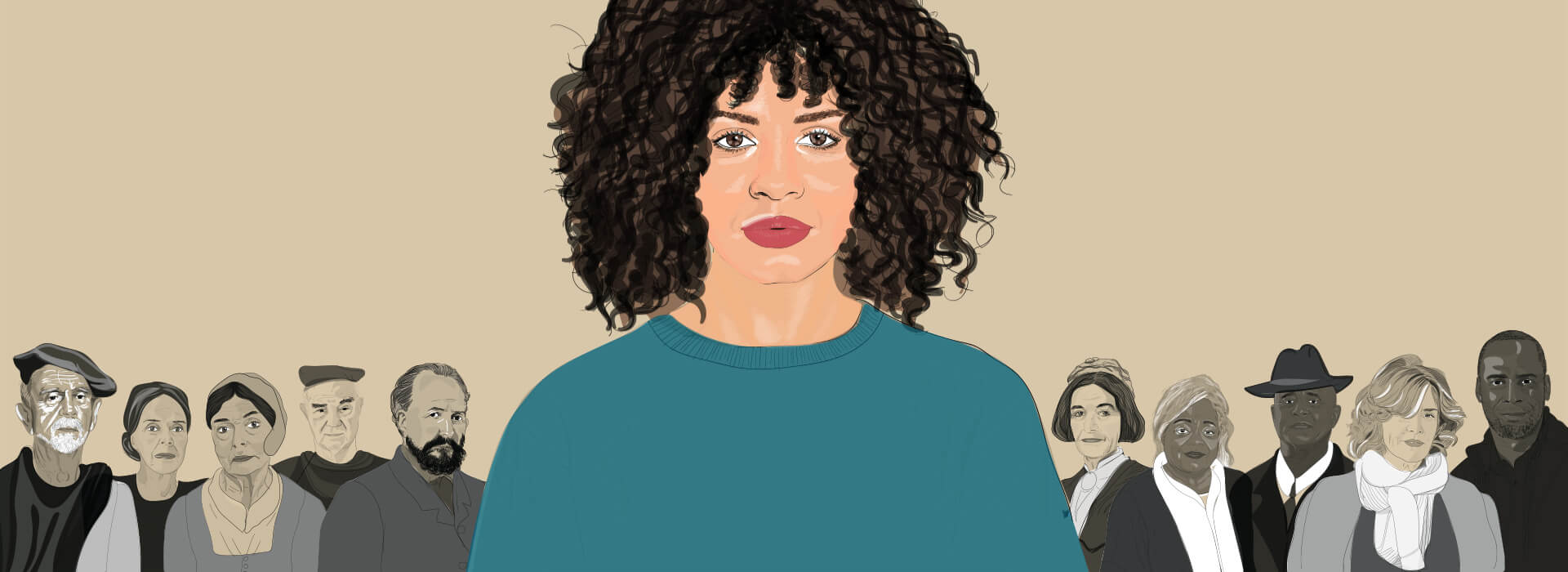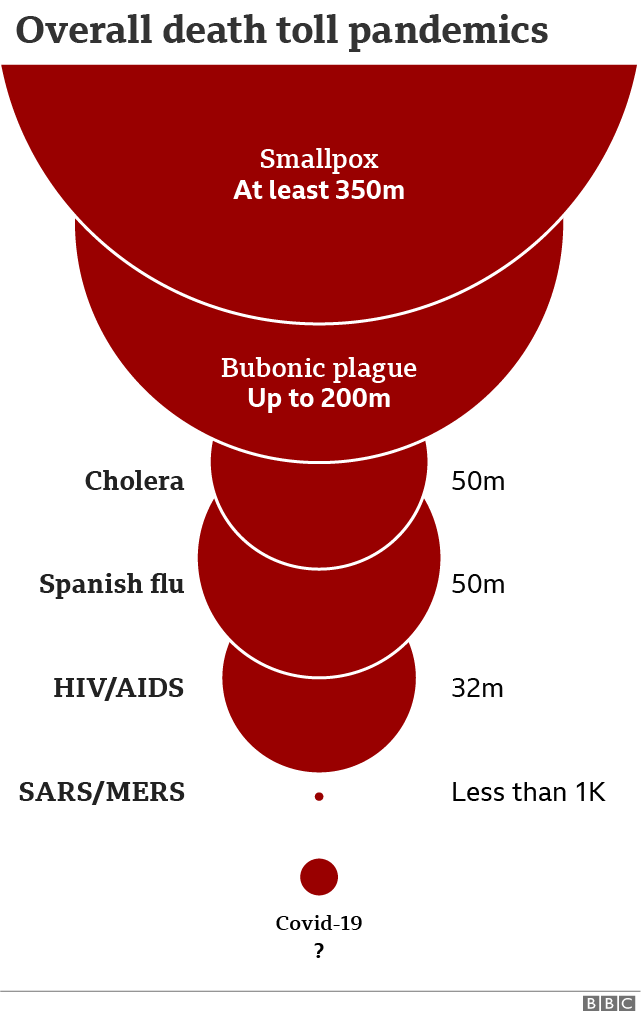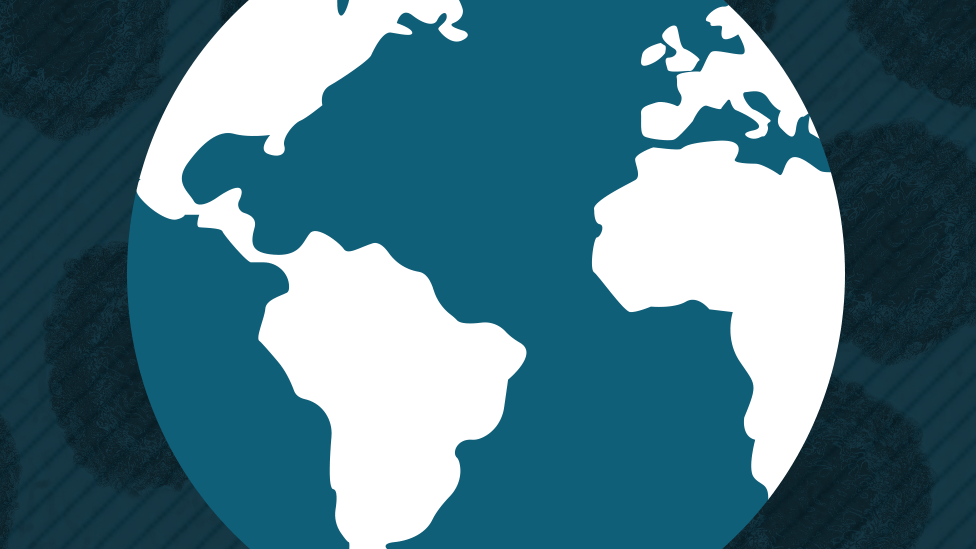
How do pandemics end?
We are in the grip of a pandemic like none other in living memory. While people are pinning their hopes on a vaccine to wipe it out, the fact is most of the infections faced by our ancestors are still with us.
Scroll down ↓ to find out how some of those pandemics came to an end, giving us clues as to how our future may unfold.

This is Jasmine.
Just like us, her ancestors survived a number of pandemics.
Take a journey back in time to see what diseases they faced.
Back in the Dark Ages, about 60 generations ago, Jasmine's relatives lived through a series of outbreaks of the bubonic plague.
The disease, caused by bacteria transmitted by fleas on rats and via respiratory droplets from infected people, was devastating.
The bacteria yersinia pestis circulates within certain populations of rodents

It killed hundreds of millions of people over a period of 2,000 years.
The Black Death of 1346-1353 is considered the deadliest outbreak of all.
The plague has killed millions, but few die today
It is believed the disease, which causes swollen and infected lymph nodes, called buboes, was finally brought under control by strict quarantining and improved sanitation, among other things.
But none of this could have happened without an understanding of how transmission occurred, says Steven Riley, professor of infectious disease dynamics at Imperial College London. This is something that still applies today.
"Once you have the knowledge, and you share the knowledge, then you are able to take measures to push transmission much lower," he says.
Yet cases of the plague still occur - for example, in Inner Mongolia in July this year - and, in theory, Jasmine could still catch it.
Numbers are low though, and the disease can now be successfully treated with antibiotics.
Hundreds of years later, Jasmine's ancestors faced the spectre of smallpox.
The disease, caused by the virus variola minor, is one of the deadliest known to humans.
It caused fluid-filled pustules to develop all over the body and at its height, about three out of every 10 people with the disease died.
It could be spread via droplets from an infected person's nose or mouth or via their sores.
The virus variola minor has no animal host

Like the plague, smallpox killed hundreds of millions of people - 300 million in the 20th Century alone.
Smallpox killed at least 350 million - no-one dies today
But, thanks to a vaccine developed in 1796 by British doctor Edward Jenner and the efforts of the scientific community, the disease has been completely erased - although it took nearly two centuries to do so.
Smallpox remains the only human disease to have been eradicated this way. Prof Riley regards this feat as one of the greatest achievements of mankind - rivalling the Moon landings.
"It could be seen as the greatest return on a public investment ever," he says, referencing the annual savings the world has enjoyed thanks to the absence of the disease.
Because of this achievement of science, we, and Jasmine, are no longer at risk.
Then, just eight generations ago, Jasmine's great-great-great-great-great-great-great-great grandparents faced the threat of cholera.
The disease, caused by contaminated food or drinking water, has killed millions of people in seven pandemics, according to the World Health Organization.
The bacteria vibrio cholerae is found in contaminated water or food

But while improved hygiene and sanitation in the West has removed the threat of the disease, it remains endemic - or common - in many low-income countries and kills between 100,000 and 140,000 people every year, according to the WHO.
Cholera has killed millions, and thousands still die
"You plumb your way out of cholera," says Prof Riley. "If the plumbing goes wrong, it can spread very quickly."
Because of this, depending on where Jasmine calls home, she could still be at risk of catching it and dying, despite the availability of a vaccine and the disease's easy treatment.
Jasmine's family would also have lived through a number of flu pandemics. The biggest recorded was in the early 20th century, around the time of her great-great grandparents.
The 1918 Influenza pandemic, sometimes referred to as the Spanish flu, was the most severe outbreak in recent history, killing 50-100 million people worldwide.
Much like with the new coronavirus today, isolation and quarantine slowed transmission.
The H1N1 virus caused the Spanish Flu pandemic

After two waves between 1918 and 1920, that particular H1N1 strain of flu faded away to become a more benign version that still circulates every year.
Millions died from Spanish Flu - and seasonal flu still kills
But other flu pandemics followed.
The Hong Kong flu of 1968 killed one million people and also still circulates as a seasonal flu. As does Swine Flu - a version of the H1N1 virus - which infected about 21% of the world's population in 2009.
Flu continues to pose "a pandemic threat", says Prof Riley, and Jasmine, and us, remain at risk of experiencing another pandemic caused by such viruses.
We are also at risk of catching seasonal flu, which continues to kill hundreds of thousands every year.
Then, about four decades ago, Jasmine's parents lived through the spread of HIV/Aids - regarded by some as a pandemic but described as a "global epidemic" by the WHO.
The Human Immunodeficiency Virus (HIV) - transmitted through bodily fluids - has claimed more than 32 million lives across the globe so far.
HIV attacks the human immune system

HIV could be regarded as an "worst case scenario virus", says Prof Riley, because of the length of time it takes to develop symptoms and its high fatality rate. It spreads fast because people don't necessarily know they have it.
However, advances in diagnostic techniques and global public health campaigns - which have changed sexual behaviour and increased the availability of safe injections for drug users - have helped slow the growth in infections.
Despite this, an estimated 690,000 people died from Aids in 2019, according to WHO figures.
HIV/Aids has killed millions - and thousands still die
Although there is no cure for HIV, if Jasmine lived in a country with good healthcare and access to antiretroviral drugs, she could now lead a long and healthy life.
However, if she lived in a low-income country and did not have such provision, she may well still be at risk.
Two and three decades later - during Jasmine's own lifetime - came the threat of Sars and Mers.
Severe Acute Respiratory Syndrome (Sars) - the first deadly epidemic caused by a coronavirus - killed more than 800 between 2002 and 2003, according to the WHO.
The Sars coronavirus (known as Sars-Cov) was identified in 2003

But by late July 2003, no new cases were being reported, and the WHO declared the global outbreak to be over.
A little later came Middle East Respiratory Syndrome (Mers), also a coronavirus, which has killed 912 people. Most cases have occurred in the Arabian Peninsula.
While the risk of contracting the virus, known as Mers-CoV, in the UK, for example, is regarded as very low, it remains higher in the Middle East - with humans usually infected by camels.
Sars has killed just over 800 people
As such, while Jasmine could still catch Mers, the risk is low in most countries.
Now, in Jasmine's and our lifetimes, we are facing the spectre of the new Sars coronavirus, which triggers the respiratory disease Covid-19.
Sars-Cov-2, as it is known, is an evolved version of the 2003 Sars virus and is regarded by disease specialists as unique, thanks to its range of symptoms - from none to deadly - and high levels of transmission by people without symptoms or before they develop them.
"Because of that, many populations have not been able to control it," says Prof Riley.
The virus Sars-Cov-2 is related to the 2003 Sars virus

More than a million people have died with the virus so far - but the overall toll is likely to become much higher.
More than a million have died with the virus so far
While the hunt for a vaccine and effective treatments continues, the risk remains real for the vast majority of the global population. Jasmine, like us, is still at risk.
What next?
So the coronavirus now circulating in our communities is just the latest in a long line of pandemics caused by emerging pathogens, such as viruses or bacteria.
The largest pandemics have killed hundreds of millions over time

Increased knowledge about transmission, public health campaigns, new treatments and vaccines have all played their part in bringing previous crises to an end.
The end-game for the current pandemic is also likely to come from a combination of similar measures.

Although a "safe, highly-effective" vaccine could bring about its conclusion, says Prof Riley, finding one is "by no means a given".
Instead, we may have to get better at living with it while developing a level of resistance to the disease.
"Definitely by five years, hopefully much sooner, we'll either have a really good vaccine that is being used throughout the world or we'll have muddled on long enough that we've accumulated enough immunity and learned how to live with small resurgent outbreaks," he says.
And as the eradication of smallpox proved, when the world's scientific community comes together, great things are possible.
Although the new coronavirus is a much trickier challenge, because of its high levels of asymptomatic transmission, Prof Riley is optimistic the "incredible" global quest for a solution will win through.
"The world has never had a shared project like this before," he says. "Hopefully it becomes a shared success at some point."
However, it may serve us well to remember that most of the pathogens that rampaged through societies in pandemics in the past are still around. While the crises ended, the viruses and bacteria - and their resulting infections - remain.


 This is what coronavirus will do to our offices and homes
This is what coronavirus will do to our offices and homes
 Global outbreak tracker
Global outbreak tracker
 Your tributes to those who have died
Your tributes to those who have died